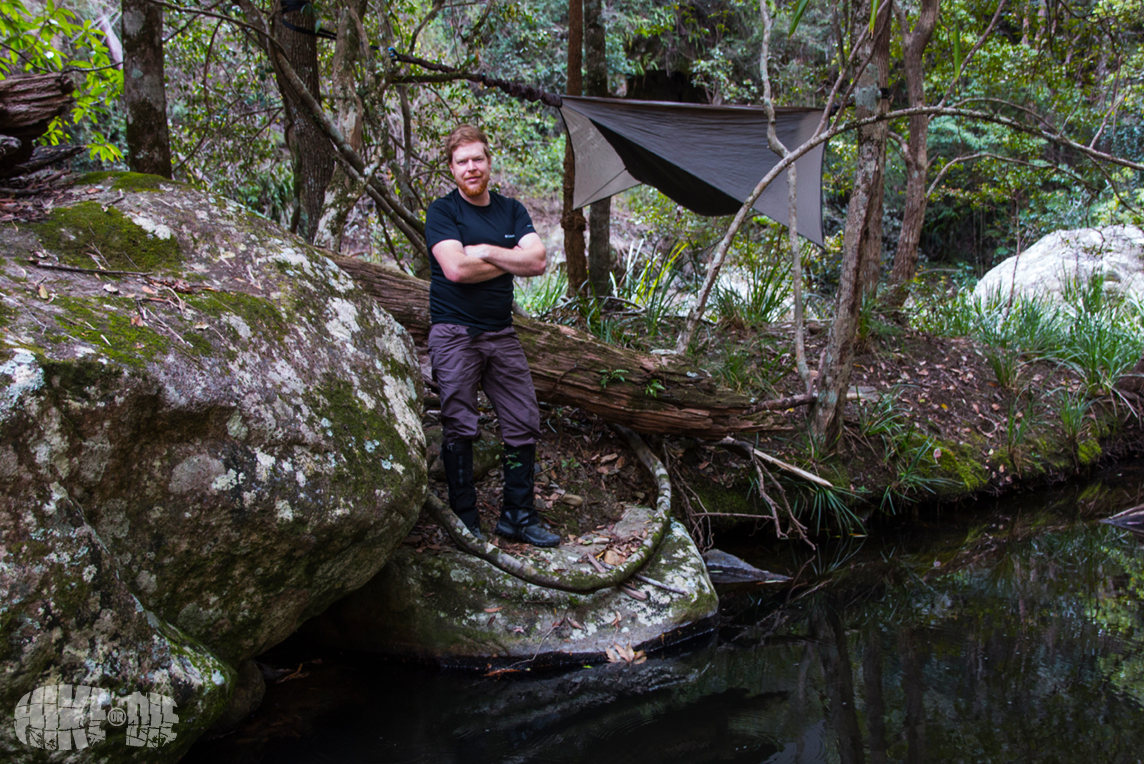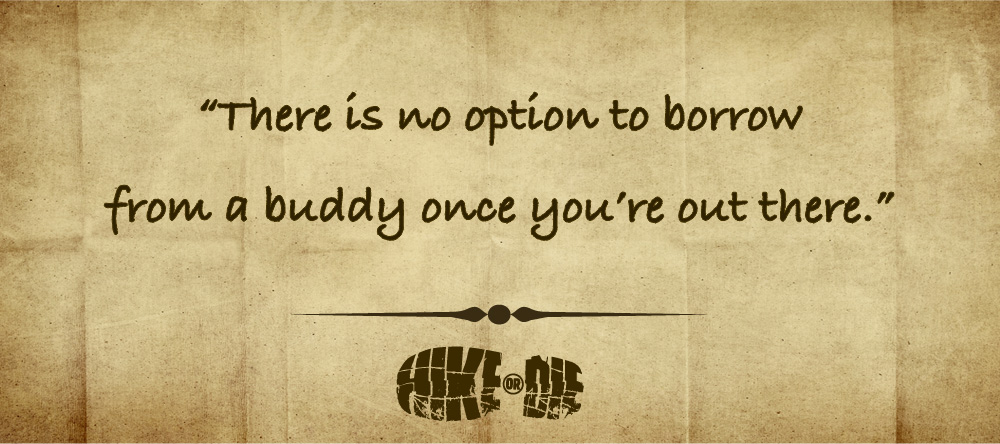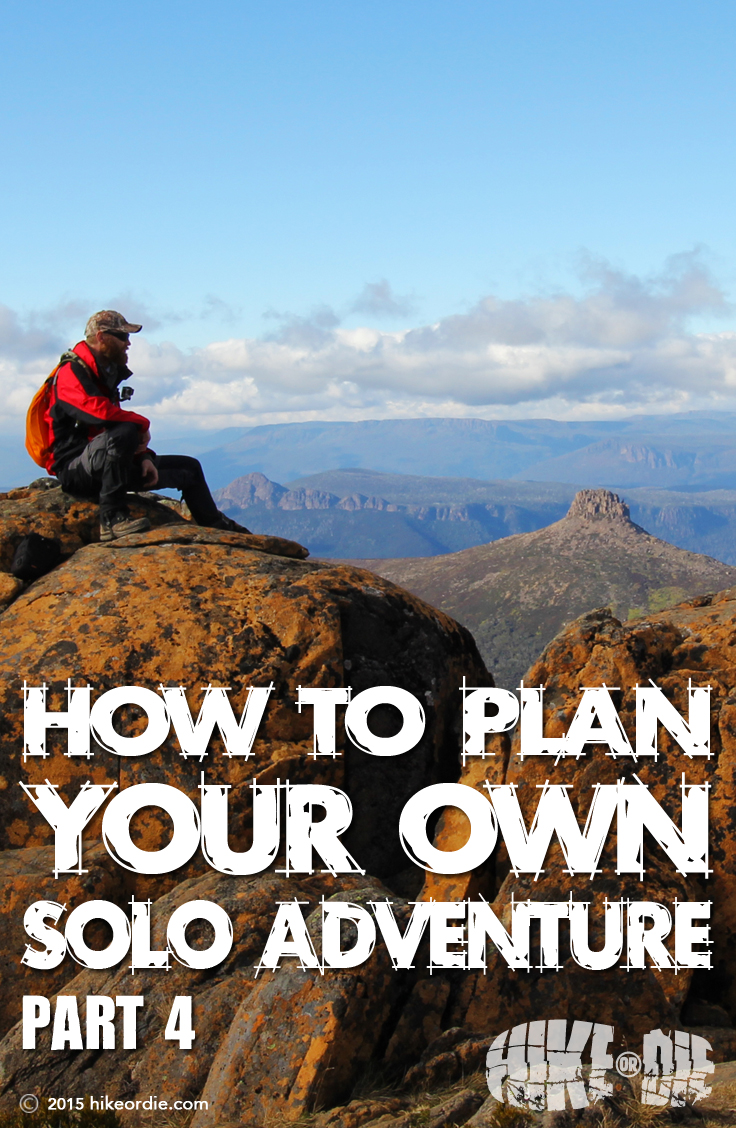It’s time to pack. You’re going to need a system that works. So let’s go!
PART 4. LISTS AS LONG AS YOUR HIKING POLE:
This is a ‘How to plan’ not a ‘What to pack’ article so I’m not going to list every item you need to carry. What I will do instead is tell you how to go about preparing and packing for your trip in the way that works best for me.
Have you ever left your house, driven half way down the road and realised you’ve forgotten your wallet, phone or can of beer? I’ve done it plenty of times and it’s the reason I never trust anything to my memory, especially something as critical as packing for a solo outdoor adventure. Lists are going to be your friend here. Not only do they help you check off items as you pack but they also help you to cull unnecessary equipment at the same time. I’ve even set mine up in a spreadsheet showing the weight of each item so I know where to make sacrifices depending on the type and duration of trip I’m embarking on.

My friend Jeremy practically writes lists about lists when he’s planning his hiking adventures and sure, it’s a little OCD but I think that’s great. Every time you write or rewrite a list you are forcing yourself to reevaluate the place of each individual item within your pack. It also helps if you break the list down into categories that are logical to you (shelter, food, cooking, clothing, hygiene etc) and include the information that best helps you pack. After all, you are the only person who needs to understand it.
One of the most important things you need to remember about packing for a solo trip is this: There is no option to borrow from a buddy once you’re out there. So once you have that list locked down, make sure you use it.
 Armed now with the final edit of your list, find an area in your home where you can lay all of your gear out in front of you. Note: kids, knives and lighters don’t really mix as I discovered, so make sure you choose an area where you can safely leave gear laying around. Anyway, I split the area into two halves. On the left side will be a pile of all the hiking gear and camera equipment I own as well as all the food I’ll require. The right side is reserved for what I call my “Ready to Pack” pile. Anything that goes in that right hand pile must be ready to go straight into my backpack. I also group the “Ready to Pack” items based on weight and frequency of use so that I can pack accordingly when the time comes.
Armed now with the final edit of your list, find an area in your home where you can lay all of your gear out in front of you. Note: kids, knives and lighters don’t really mix as I discovered, so make sure you choose an area where you can safely leave gear laying around. Anyway, I split the area into two halves. On the left side will be a pile of all the hiking gear and camera equipment I own as well as all the food I’ll require. The right side is reserved for what I call my “Ready to Pack” pile. Anything that goes in that right hand pile must be ready to go straight into my backpack. I also group the “Ready to Pack” items based on weight and frequency of use so that I can pack accordingly when the time comes.
It’s a good time to point out that this is when you need to be extra vigilant. I suggest you NEVER put anything into the ‘Ready to pack’ pile unless it’s 100% ready for use. Good examples on my packing list are things like my Zippo lighter and my Steripen water steriliser. I will never put these in the “Ready to pack” pile until I have refuelled the Zippo and put freshly charged batteries into the Steripen.
Once you have ticked off everything on your list and it’s laid out in the “Ready to Pack” section, you can begin packing your backpack. As another checkpoint in your system, I recommend ticking the items off the list again as you put them into the pack. Once you are fully packed, sit back, pour yourself a beverage, and then bask in the glory of your truly amazing achievement.
Remember: Write a solid list and then trust that list. That’s all there is to it.
Coming up in Part 5:
In the next instalment: ‘You can never be too safe‘, I’m going to take you through the basics of outdoors safety. What might surprise you is, most of that starts before you even leave the house.
HOW TO PLAN YOUR OWN SOLO ADVENTURE:
1. Choose your own adventure
2. How long is long enough?
3. Plan like your life depends on it
4. Lists as long as your hiking pole
5. You can never be too safe
